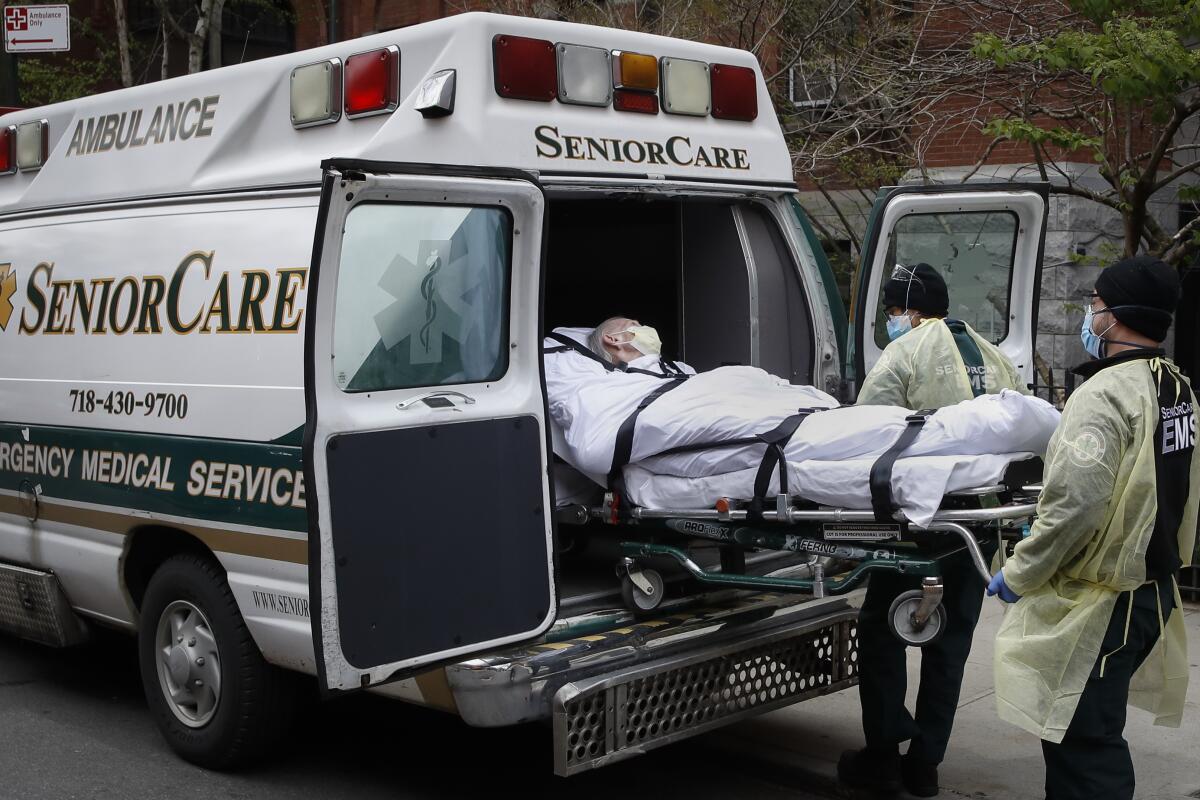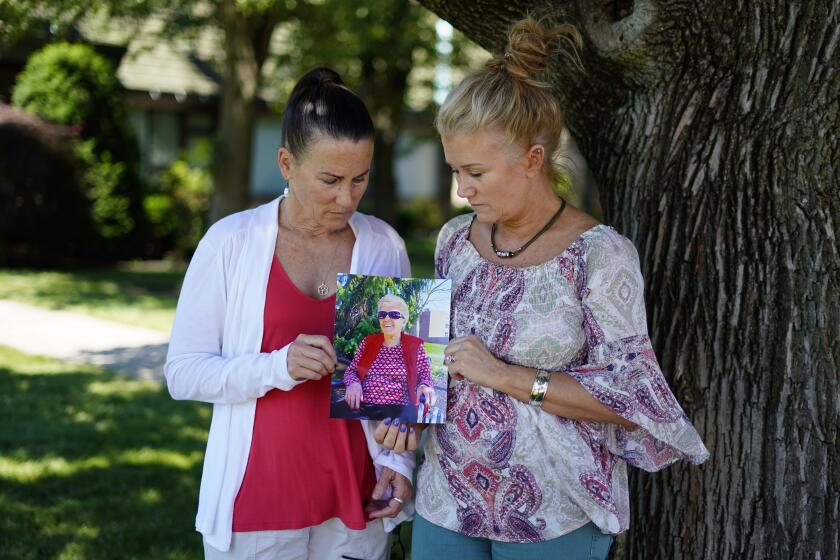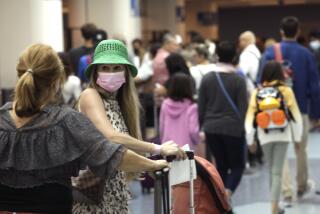Nursing home deaths rose by 32% in 2020 amid COVID-19 pandemic

- Share via
WASHINGTON — Deaths among Medicare patients in nursing homes soared by 32% last year, with two devastating spikes eight months apart, a government watchdog reported Tuesday in the most comprehensive look yet at the ravages of COVID-19 among its most vulnerable victims.
The report from the inspector general of the Department of Health and Human Services found that about 4 in 10 Medicare recipients in nursing homes had or likely had COVID-19 in 2020, and that deaths overall jumped by 169,291 from the previous year, before the coronavirus appeared.
“We knew this was going to be bad, but I don’t think even those of us who work in this area thought it was going to be this bad,” said David Grabowski, a Harvard professor and nationally recognized expert on long-term care, who reviewed the report for the Associated Press.
“This was not individuals who were going to die anyway,” Grabowski added. “We are talking about a really big number of excess deaths.”
Investigators used a generally accepted method of estimating “excess” deaths in a group of people after a calamitous event. It did not involve examining individual death certificates of Medicare patients but comparing overall deaths among those in nursing homes to levels recorded the previous year. The technique was used to estimate deaths in Puerto Rico after Hurricane Maria in 2017 and in New York after the first coronavirus surge last spring. It does not attribute a cause of death but is seen as a barometer of impact.
Death rates were higher in every month last year when compared with 2019. The report documented two spikes with particular implications for government policy and for protecting the most vulnerable in future outbreaks of life-threatening illnesses.
Pandemic restrictions are falling away almost everywhere — except inside many of America’s nursing homes.
In April of last year, a total of 81,484 Medicare patients in nursing homes died. Eight months later, after lockdowns and frantic efforts to expand testing — but before vaccines became widely available — nursing home patients accounted for a staggering 74,299 deaths in December.
“This is happening long after it was clear that nursing homes were particularly vulnerable,” said Nancy Harrison, a deputy regional inspector general who worked on the report. “We really have to look at that. Why did they remain so vulnerable?”
Federal investigators are trying to document the chain of causes and effects.
Tuesday’s report is the most comprehensive yet from the government because it includes statistics for the early part of last year, during the initial coronavirus surge. Medicare did not require nursing homes to report COVID-19 cases and deaths occurring before May 8, more than four months into the pandemic in the U.S.
California and local prosecutors sue Brookdale Senior Living Inc., alleging improper discharges and false advertising.
In another new finding, the report showed that cases and deaths among Asian American patients tracked with COVID-19’s more severe impact among Blacks and Latinos. Indeed, Asian Medicare enrollees in nursing homes saw the highest increase in death rates, with 27% dying in 2020 compared to 17% the previous year. For whites, the death rate grew to 24% in 2020 from 18% in 2019, a significant increase but not as pronounced.
Death rates for Latino and Black patients were 23% last year, up from 15% in 2019.
The findings about Asians highlight a riddle for researchers, said Tamara Konetzka of the University of Chicago, who also reviewed the report for the AP. The reasons for higher cases and deaths among Blacks, Latinos and Asians may not necessarily be tied to race and ethnicity. Instead, patients of color may be clustered in homes in communities with more severe outbreaks.
The inspector general’s office based its analysis on Medicare billing data, also including patients in Medicare Advantage plans sold by private insurers. Medicare covers the vast majority of nursing home patients, and the report included long-term residents as well as those temporarily at a facility for rehabilitation.
The report found that low-income nursing home patients covered by Medicare and Medicaid together were much more likely to have gotten COVID-19. The infection rate for that group reached 56%, and 26% died.
Some states suffered worse impacts. By the end of December, more than half of the Medicare patients in nursing homes in Connecticut, Illinois, Louisiana and New Jersey had or likely had COVID-19.
Across the U.S., the coronavirus found ideal conditions to spread among frail nursing home residents living in close quarters. Many researchers believe it likely that staffers unwittingly brought the virus in from surrounding communities.
Although facilities locked down in March of last year, government efforts to help were haphazard. The industry complained of chronic shortages of protective gear, including basics like masks and gowns.
The Trump administration initially delegated responsibility for testing to states before belatedly marshaling more federal resources.
More to Read
Sign up for Essential California
The most important California stories and recommendations in your inbox every morning.
You may occasionally receive promotional content from the Los Angeles Times.















